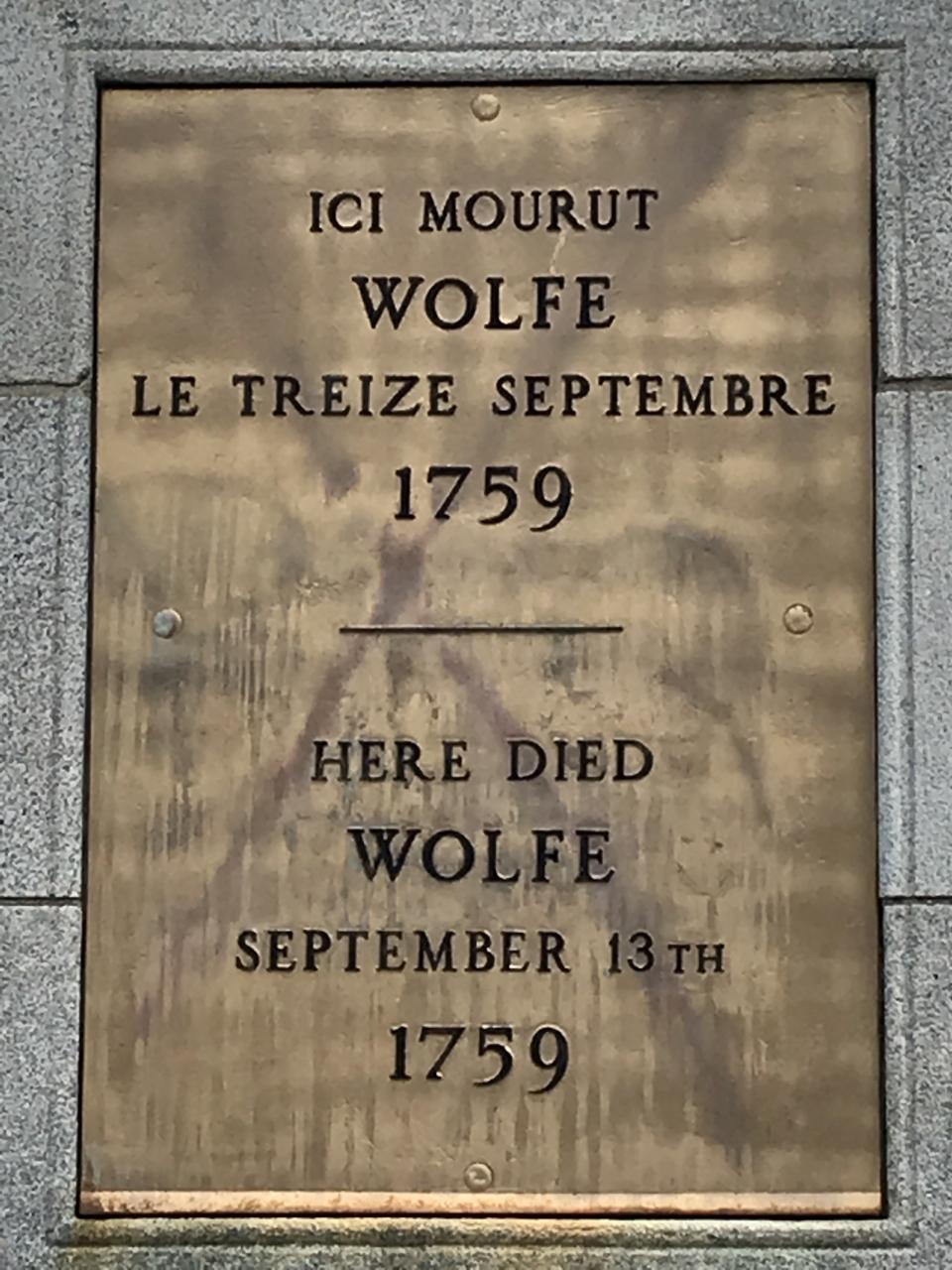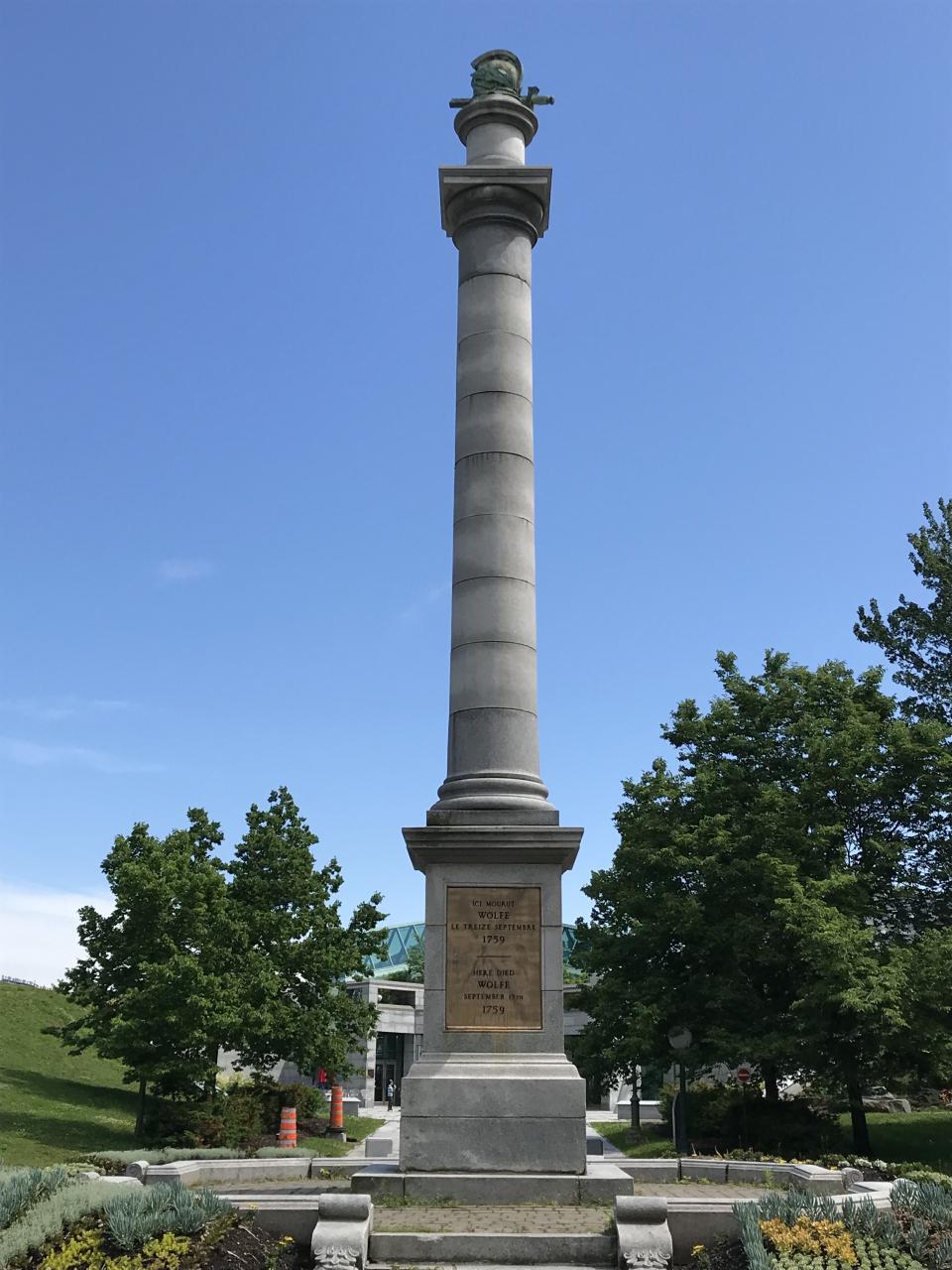About the Artist
Benjamin West
Born: Springfield (now Swarthmore), PA, 10 October 1738
Died: London, 11 March 1820
Nationality: American
Collection
National Gallery of Canada, Ottawa
In 1771, West painted a copy for George III (collection of Her Majesty the Queen). West painted at least 4 additional versions.
Documentation:
The painting was engraved by William Woolett and published by John Boydell.
“It was one of the most commercially successful prints ever published, and the income from it provided the cornerstone of the fortune made by Alderman Boydell as a print publisher.”
Helmut von Erffa and Allen Staley, The Paintings of Benjamin West (New Haven-London: Yale University Press, 1986), 213.
John Galt, West’s biographer, noted:
“The event intended to be commemorated took place on the 13th of September, 1759 in a region of the world unknown to the Greeks and Romans, and at a period of time when no such nations, nor heroes in their costume, any longer existed….The Same truth that guides the pen of the historian should govern the pencil of the artist. I consider myself as undertaking to tell this great event to the eye of the world; but if, instead of the facts of the transaction, I represent classical fictions, how shall I be understood by posterity!”
John Galt, The Life, Studies, and Works of Benjamin West, Esq. President of the Royal Academy of London, Composed from Materials Furnished by Himself , vol. 2 (London: T. Cadell, 1820), 232.
Benjamin West explained his strategy for depicting the death of Wolfe in his diary:
“It must exhibit the event in a way to excite awe & veneration & that which may be required to give superior interest to the representation must be introduced, all that can show the importance of the Hero. Wolfe must not die like a common soldier under a Bush…To move the mind there should be a spectacle presented to raise && warm the mind & all should be proportioned to the highest idea conceived of the Hero….A mere matter of fact will never produce this effect.”
Quoted in Allen Staley, Benjamin West. American Painter at the English Court (The Baltimore Museum of Art, 1989), 54.
Vivien Green Fryd interprets the significance of the Native American in West’s Death of General Wolfe:
“Eighteenth-century notions of masculinity promoted honor and courage in the face of war and death, tragedies that bound men together in pain, suffering, and anguish….the Native American symbolized the masculinity of an alien culture, that of the natural, uncivilized man. His naked body is displayed in opposition to the clothed Europeans, whose military uniforms signify masculinity, courage, and strength. Although the Indian, as a warrior, is part of the scene, his nakedness and accoutrements – trade blanket, hunting pouch, and body paint – simultaneously single him out. His partial nakedness likewise affects how we see him: both exposed and covered, he is available to our gaze yet hidden from full view.
At the same time, the Native American’s gaze directs the viewer’s gaze to the fallen hero, who reclines in a supine, feminized position. In contrast to the activity and purpose demonstrated by the British soldiers, the Iroquois and Wolfe are inactive and passive, qualities coded as feminine. Wolfe’s pale skin, wounded state, and expressive face with upward-looking eyes reinforce this impression. Nakedness is in fact implicit in the fallen hero, whose gaping wound – covered by a white cloth – opens his body to expose his vulnerability. His nakedness is displaced onto the Native American, who, although passive, displays a heroic, muscular body. The Indian thus combines masculine power with feminine weakness, underscoring both his strength and his subservience to British power. By rendering the Indian as naked and vulnerable in his seated pose, West diminished his threat and placed him in a secondary position, as a tributary to the British forces during the French and Indian War.”
Vivien Green Fryd, “Rereading the Indian in Benjamin West’s Death of General Wolfe, American Art, vol. 9, no. 1 (Spring 1995): 83-4.
Dennis Montagu comments on West’s purpose in The Death of General Wolfe :
“That West’s The Death of General Wolfe is, actually, a narrative of the entire battle of Quebec indicates that much painstaking research and careful planning must have gone into its creation. As [Jonathan] Richardson offers advice to artists who would aspire to paint history, he wrote that in order to paint history well, an artist must be able to write it; that is, he must be completely knowledgeable of all factors relating to it, ‘and conceive it clearly, and nobly in his mind, or he can never express it upon the canvas.’ In short, he who would paint history must possess all the requisites of a good historian and, in addition, something more. He must know ‘…the habits, customs, buildings, etc. of the age and country in which the thing was transacted more exactly than the other needs to know ‘em.’ In fact, as a matter of course, Richardson strongly suggests that before doing the first sketch, an artist should write out the story ‘and give it all the beauty of description with an account of what is said and whatever else he would relate were he only to make a written history.’
The intense study that must go into any historical representation, to make it truthful to its era, whether ancient or modern, comprises the first of a two step process for the creation of a proper history painting, according to both the theory of Jonathan Richardson and the practice of Benjamin West. As the second step, after a painter has mastered all of the historical facts of the event to be depicted, and the auxiliary information such as dress, architecture, and embellishments, he must then ‘consider how to improve it (the painted subject) keeping within the bounds of probability.’…
West’s crowding of the foreground in The Death of General Wolfe, though often criticized for its historical inaccuracy, is completely in keeping with his expressed desire to arrive at a ‘perfect’ philosophical truth by melding literal and ideal truth. Though only a few actually witnessed Wolfe’s death, such a depiction would have lessened the monumentality of the scene and, therefore, would not have conveyed to the viewer the perfect truth implicit in this particular death….West chose for his subject the entire Battle of Quebec, and focused on Wolfe’s death as its crucial and most heroic moment.”
Dennis Montagna, “Benjamin West’s The Death of General Wolfe: A Nationalist Narrative,” American Art Journal, vol. 13, no. 2 (Spring 1981): 85-7.
James Barry painted this subject in the mid-1770s:
"The Death of General Wolfe. When Benjamin West was dealing with the same theme in 1771, Reynolds had urged, unsuccessfully, that the figures should be shown wearing antique costumes and armor. Edwards states that Barry's predelictions for antiquity went still further; and that the visitors who thronged to see his work in the [Royal] Academy exhibition of 1776 were astounded and by no means pleased to find the Battle of Quebec represented as a combat of naked warriors. THe picture has long since disappeared, but a description of it given in the Public Advertiser of May 4th in that year shows Edwards to have been wrong; for the writer mentions specifically among the characters depicted a naval officer, a midshipman and two grenadiers; whose ranks and services he could scarcely have identified had they been naked."
Thomas Bodkin, "James Barry," Journal of the Royal Society of Arts, vol. 89, no. 4576 (December 1940), 41.
Other Paintings of this Subject:
Edward Penny, The Death of General Wolfe, 1764 (Petworth House, Sussex)
James Barry, The Death of General Wolfe, 1776 Royal Academy exhibition (New Brunswick Museum, St John, Canada)

